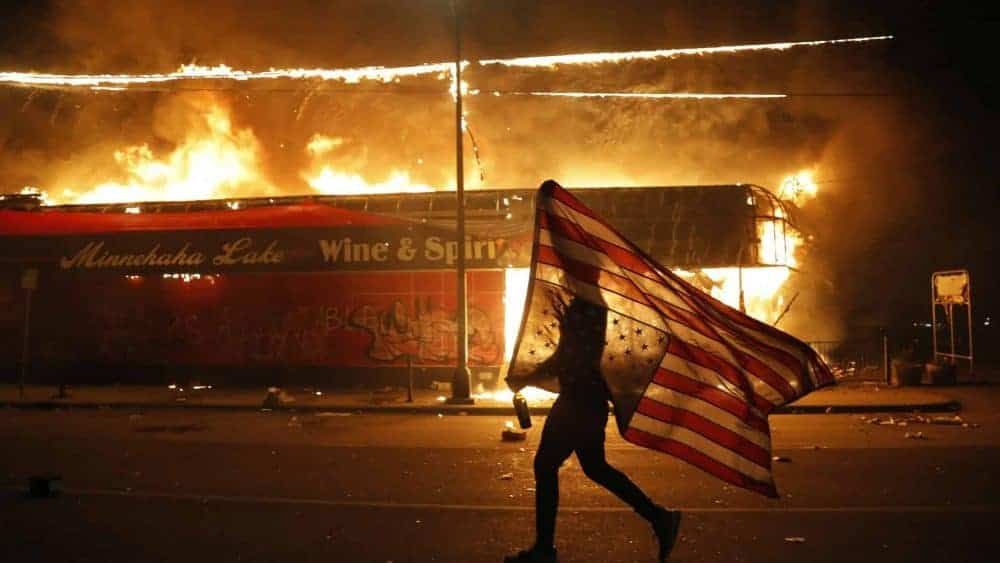
Credit;PA
My entry level lesson into racism in America was the teaching from two African American friends, the cameraman and sound recordist I worked with on a film about policing and race in Los Angeles. Together we followed a British-born police officer who had formerly been in London’s Metropolitan police – where he never carried a gun – and was now an LA cop, where he was always armed when on duty.
The police officer took us on a tour of the vast areas he patrolled alone in his squad car, including mainly African American areas. These had been the focus of riots in 1992 after the beating of a black motorist, Rodney King, by white police officers. For my African American film crew what was significant about the Rodney King beating was not that it happened. Black males were often reported to have been beaten by police. Nor was it that the beating was brutal. What was unusual was that Mr King’s beating was filmed by an onlooker. That meant the shocking pictures were on all the TV news programmes. When the police officers were subsequently cleared of all charges against them by an all-white California jury, America’s worst rioting in decades began.
Filming the white police officer was itself an eye-opener. He and his colleagues told stories of police being shot at by local gang members armed with Mac-10s, blowback operated machine pistols. We heard of gangsters who wore bullet proof Kevlar vests, and of routine police patrols coming under fire. My film crew and I discussed what we heard and came to understand at least some of the fear in an LA police officer’s life, when any citizen they meet might be carrying a gun.
After filming, the cameraman suggested he would drive me through Beverly Hills to show me some of the big movie star mansions. He and the sound recordist sat in the front of the van. I was in the back as we drove through one of the most expensive pieces of real estate on the planet. At a road junction in a quiet residential street the cameraman stopped the van to let a white woman cross the road. She looked at him in a mixture of shock, surprise and fear.
“What was that about?” I said.
The cameraman laughed and told me I had just witnessed “the Look,” the Look on the face of a white American in a wealthy neighbourhood who was suddenly surprised and frightened by seeing two black men driving a van in a place where they were not expected and not really welcome. She was frightened. Black men were frightened of an encounter with racist police. When Americans are frightened they buy more guns to protect themselves, and more guns create even more fear.
This week, like half the world, I saw film of the arrest of George Floyd, the black man pinned to the ground by the knee of a Minneapolis police officer on his neck, despite Mr Floyd protesting that he could not breathe. We’ve witnessed the event on television and the rioting that followed. Mr Floyd’s cruel death, and the sight of an African American CNN reporter arrested live on television by police in Minneapolis are signs that nearly 30 years after the Rodney King beating, nothing much has changed. Britain, France, Australia and just about any country you can name has no perfect record on matters of race.
But race undoubtedly remains the central fault line in American society. Racial tensions are made worse by fear, and fear is made worse – not better – by the presence of so many guns in America. It was striking that when coronavirus struck, in Britain and across Europe, people rushed out to buy toilet rolls while Americans rushed out to buy guns – the dispiriting sign of a society which believes law and order is so fragile that anarchy maybe just one racial incident away.
Donald Trump may be the political beneficiary of these events. He plays the race card with skill and it energises his supporters. This week he Tweeted a phrase apparently coined by a 1960s white police chief in Miami in the 1960s, “when the looting starts, the shooting starts.” After trouble from far right American so-called “white nationalists” – people we should simply call “racists” – in Charlottesville, Virginia, Mr Trump said there were “very fine people, on both sides.” There weren’t. In 2019 he Tweeted about sending four Congresswomen of colour “back home” because they “originally came from countries whose governments are a complete and total catastrophe.” Three of the Congresswomen were born in America, so perhaps Mr Trump was making a more profound point about his own administration than he realised.
Related -Watch: CNN reporter Omar Jimenez arrested live on air as he reports on protests